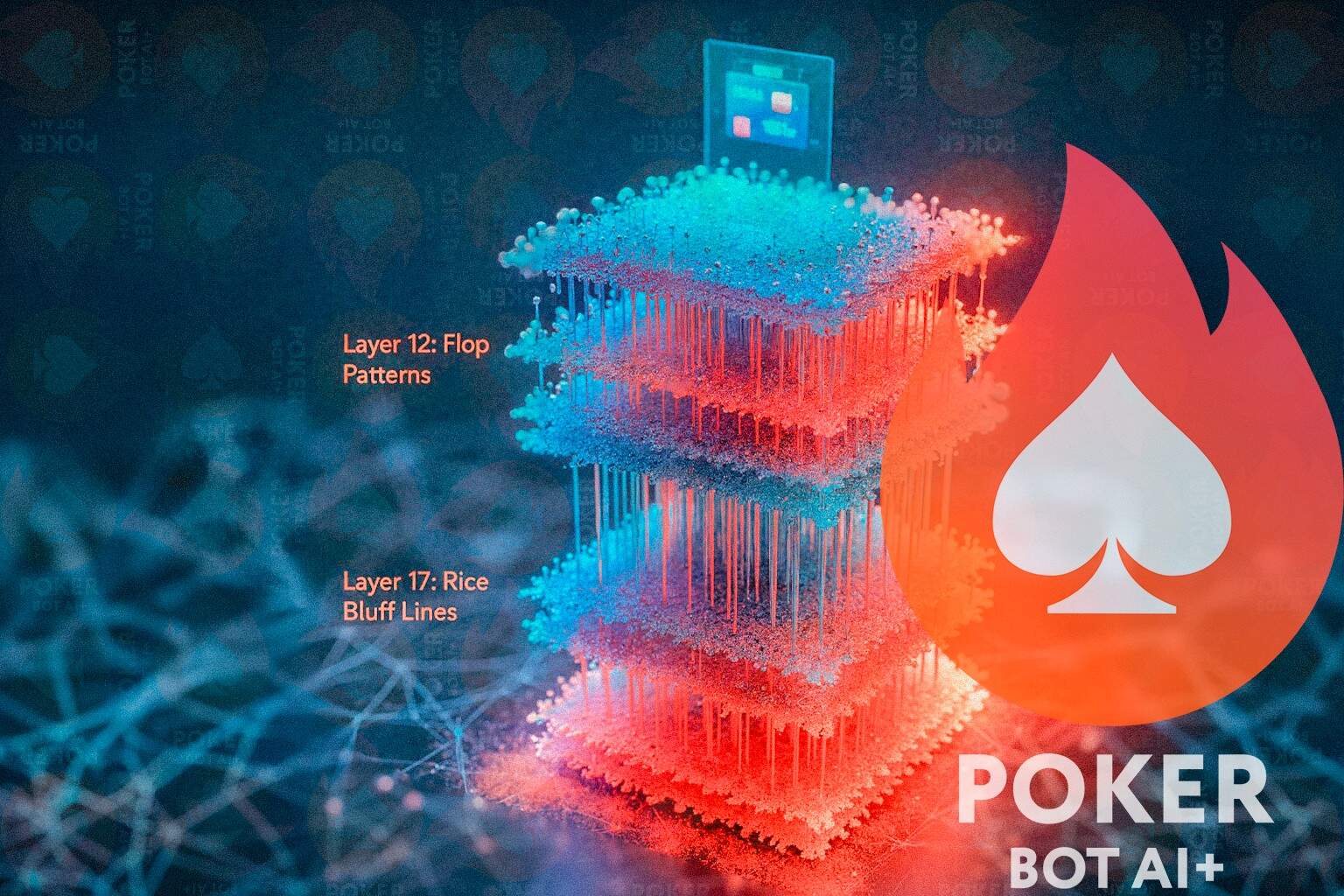
How Neural Networks in Poker AI Read Opponent Behavior
A very good judge of how an on-line poker player will play is the way he raises on the turn. Or the way he pauses — no, that pause is not just due to slow Wi-Fi. In the age of poker AI, the neural networks are the ones watching the game, and they watch the things that we take for granted.
These neural networks in poker AI are built to decode an opponent’s behavior with precision, including tiny hesitations that may be part of the data that the network tracks.
While the story of poker AI reading opponents is not a straightforward narrative, it is much closer to a jumbled deck of cards consisting of pieces of game theory, bits of machine learning brilliance and a large amount of trial-and-error in creating one single system. The wildcard in poker AI was the introduction of deep neural networks, which was not because someone said “Hey, let’s use an LSTM.”
How Neural Networks in Poker AI Learned Their Game
There were many poker bots prior to poker AI that were more than just simple math projects. Then there were DeepStack, Libratus and Pluribus — these three were more than just better bots, they were the first ones to stare down professional players and come out ahead.
What set them apart from previous generations of poker AI was the sheer number of neural networks used by each system to train on billions of hands. DeepStack was using a dense value network to evaluate the game state in real-time as the game unfolded, essentially memorizing thousands of sub-games. Libratus used nested sub-game solvers, and adaptive modules to follow the opponent’s deviations. Pluribus was able to unleash its six-max fury, smashing calculated opponent ranges with ruthless efficiency and still had enough computational power left over to order a cup of coffee.
Embedded in every line of code written for each of these systems were the building blocks for future poker AI algorithms: convolutional nets for identifying card patterns, LSTMs for tracking histories of an opponent’s actions, and the beginnings of attention mechanisms. Regardless of the complexity of the AI, the ultimate objective of each developer remained the same — to create the behaviors necessary for the AI to learn them, not simply rely on a GTO as a crutch.

How Neural Networks in Poker AI Read Opponent Behavior
The only magic involved in developing a poker AI is how you present the data to the AI. Neural networks do not develop a “feeling” of the table — they get arrays. An array of hand history, an array of stakes wagered, an array of positional information, an array of stack sizes. Essentially, it is almost like converting a smoky casino into something that silicon can understand.
The workhorse for tracking behavior of an opponent was the Long Short-Term Memory (LSTM). They observe the sequence of events (check, raise, call, delay) and update their belief state regarding what an opponent might have. They can predict what will happen in the future. The guy who foolishly over-bets his river bluffs? The AI knows him, even though you weren’t paying attention.
The Transformers represent the latest crop of poker AI researchers, and provide a more refined view. This shows how the neural networks in poker AI continue to advance, and improve their ability to identify opponent behavior in ways past models could not. Unlike Recurrent Neural Networks (RNN), they do not follow the sequence of events in time; instead, they “attend” to the most critical moment(s) in the sequence — that odd half-pot probing on the turn that instantly becomes the entire river.
From GTO to Exploitative Play in Poker AI
Pure Game Theory Optimal (GTO) strategies are a useful default option; however, poker AI has shown repeatedly that unwavering adherence to GTO is akin to showing up to a knife fight armed with nothing but a ruler — it is precise, but it misses the fun.
Neural networks excel at exploiting opponents. A poker AI does not only maintain an “equilibrium,” but it also moves around. It finds the timid caller who folds to turn barrels, and adjusts. It will reveal to you the tight player who dislikes pressure and therefore can triple-barrel just fine.
Facebook AI’s ReBeL defined this concept — two networks (value and policy) were continuously training on self-play while adjusting in live games. The MIT PokerBots trials, the unpublished poker work of DeepMind, and the commercially available poker training systems (such as PokerSnowie and PokerAlfie) all attempt to strike a balance between being rigid enough to not be exploited, yet flexible enough to exploit others.
Tricks, Tools and Unspoken Hacks
This is the part where human players find both exciting and a bit unnerving. While the same machine learning in poker that powers beautiful-looking academic papers, provides the basis for some very practical poker AI tools.
Terms such as poker cheat bot and poker hacks float around forums. There are poker AI programs, poker trainers, and the occasional “totally harmless” poker cheat sheet that only coincidentally suggests to you the optimal bet-size. And all of these tools utilize the exact same ideas of neural nets — pattern recognition, range estimation, and adaptation — and compresses them to fit into individual uses.
Not just the well-known systems. There are niche systems: Pluribus poker citations, DeepStack AI, even PokerGPT models that you could run for lightweight inference if you wanted to study them. Yes, the underground wants to name-drop the best poker bot, AI poker bot, online poker bots, etc., discreetly, of course.
What Do Neural Networks in Poker AI Really See?
If you believed that poker AI “knew” your strategy like a coach, unfortunately not — it calculates. In the poker AI world, neural networks are trained to treat an opponent’s actions as numerical distributions:
Vectors representing bet-size categories (0.25 pot, 0.75 pot, over-bet).
Vector representations of positional dynamics — plays off the button have relatively low values compared to plays off of early position.
Vector representations of action sequences — check-raise on flop, check on turn, shove on river have probability shifts.
Each poker AI algorithm receives this input, passes it through multiple layers of weights, and produces a strategy modification. If you bluff too often, your equity falls inside of their model. If you are balanced, you get GTO respect.

Why Neural Networks in Poker AI Are Important to Humans
All of this research into poker AI is not simply theoretical research. It is changing the nature of online poker. It is changing how players think about AI and poker, bots in poker, and the experience of playing against a poker AI.
In short, these systems do not make the game obsolete — they make it sharper. Players are adapting. They study from trainers. They utilize poker training software. Some players even buy research papers about poker bots so they can stay current. The world’s top poker AI cannot defeat human players, but it can still teach human players a few tricks.
And in the midst of all of this, the neural networks remain silent observers, recording your bet-sizing, your timing, and your tilt times. It is a reminder that neural networks in poker AI will always adapt, and will continue to observe and analyze opponent behavior as long as the game continues to be played. Because, in poker, as in life, someone is always watching.
